Encyclopedia of Russian History
Подождите немного. Документ загружается.

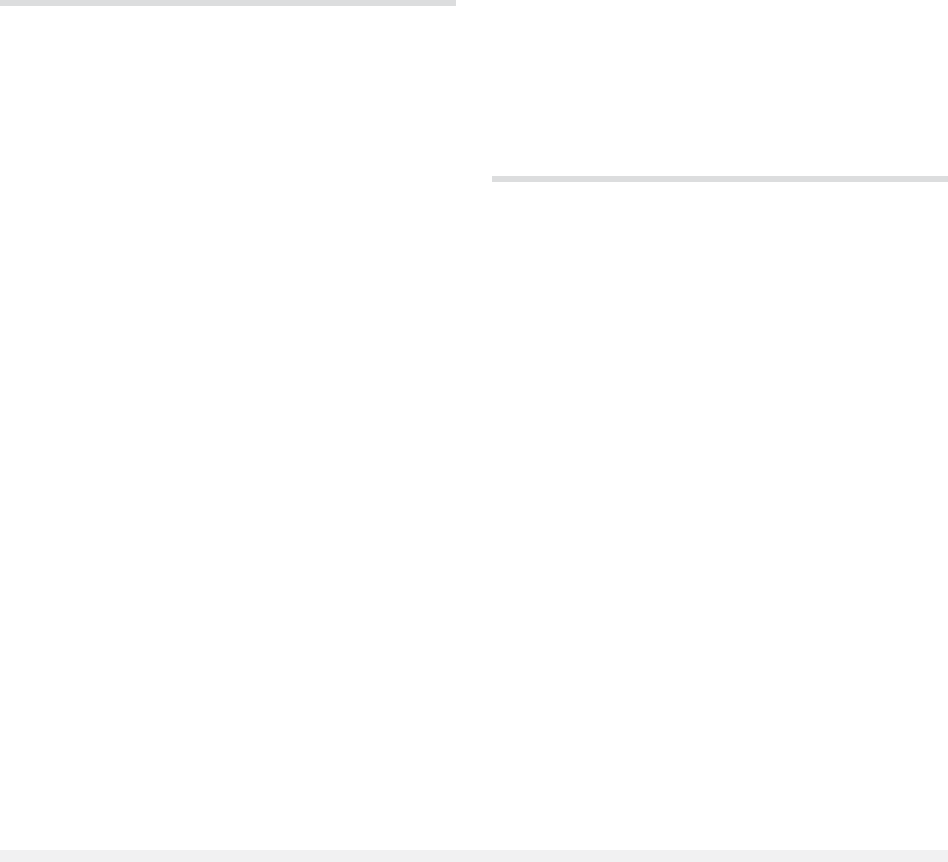
arguments favoring union of the Orthodox and
Catholic Churches.
Daniel left two collections of original writings
modeled on the encyclopedist Nikon of the Black
Mountain and Joseph of Volokolamsk—one with
sixteen discourses, the other with fourteen mis-
sives. They cover a variety of theological and eth-
ical issues and evince both Nil Sorsky’s and Joseph’s
influences. Daniel composed six other similar ex-
tant pieces and still others now lost. These collec-
tions, however, unlike the Nikon Chronicle and
Daniel’s canonic compilation, never achieved the
authoritativeness and popularity of Joseph’s En-
lightener or Maxim’s works.
See also: BASIL III; IVAN IV; JOSEPH OF VOLOTSK, ST.;
MAXIM THE GREEK, ST.
D
AVID
M. G
OLDFRANK
DANIEL, YULI MARKOVICH
(1925–1988), translator, author, show-trial defen-
dant.
A native of Moscow, Yuli Daniel fought in
World War II, then studied at the Moscow Regional
Teachers’ Institute. He began his literary career as
a translator of poetry.
During the cultural Thaw that followed Nikita
Khrushchev’s Secret Speech in 1956, Daniel began
to write short stories of his own. These include
“This Is Moscow Speaking” (1962), “Hands” (1963),
and “The Man from MINAP” (1963). Daniel’s sto-
ries were satirical and absurdist. For example, the
protagonist of “The Man from MINAP” is able to
choose the sex of any baby he fathers. To create
a boy, he thinks about Karl Marx at the point of
conception; for a girl, he fantasizes about Klara
Zetkin. In “This Is Moscow Speaking,” a summer
day in 1960 is designated “National Murder Day,”
an obvious—and bold—reference to Stalinist terror.
Even under Khrushchev, Daniel published not
in the USSR, but in the West, under the pseudo-
nym Nikolai Arzhak. Nonetheless, for the time be-
ing, Daniel remained safe from actual persecution.
However, the ouster of Khrushchev in 1964 and
the rise of Leonid Brezhnev brought about a deep
cultural retrenchment. Daniel was among the first
of its victims.
In 1965 Daniel was arrested, with fellow au-
thor Andrei Sinyavsky (who used the nom de plume
Abram Tertz). Both were put on trial in February
1966, accused by the prosecution of “pouring mud
on whatever is most holy and most pure.” The au-
thors were permitted to speak in their own defense,
but the trial was conducted in Stalinist style, with
its outcome determined in advance. Sinyavsky was
sentenced to seven years of hard labor, Daniel to
five years. The Sinyavsky-Daniel trial served as the
regime’s clear sign to the Soviet intelligentsia that
Khrushchev’s liberalism was at an end.
After serving his sentence, Daniel was forbid-
den to return to Moscow. He settled in Kaluga for
a number of years, before finally being allowed to
move back to the capital.
See also: DISSIDENT MOVEMENT; SINYAVSKY-DANIEL
TRIAL
BIBLIOGRAPHY
Brown, Edward J. (1982). Russian Literature Since the Rev-
olution. Cambridge, MA: Harvard University Press.
Terras, Victor. (1994). A History of Russian Literature.
New Haven, CT: Yale University Press.
J
OHN
M
C
C
ANNON
DANILEVSKY, NIKOLAI YAKOVLEVICH
(1822–1885), social theorist and pan-Slavist.
Nikolai Danilevsky, a pan-Slavist, introduced
into Russian social thought of the early and mid-
nineteenth century the utopian-socialist ideas of the
French thinker, Charles François Marie Fourier.
Danilevsky’s major writing was his book Russia
and Europe: An Inquiry into the Cultural and Politi-
cal Relations of the Slavs to the Germano-Latin World,
published in 1869.
In his interpretation of socialism as applied to
peasant Russia, Danilevsky developed the idea of
the existing Russian peasant commune, or ob-
shchina, as a unique, progressive, specifically Russ-
ian institution. It contained, he said, the seeds of
cooperative socialism as found in Fourier’s “pha-
lanstery,” or socialist cooperative.
Into his socialist worldview Danilevsky had
added the Russian ingredient of Slavophilism and
pan-Russism. This nationalistic concept that influ-
enced some segments of the Russian intelligentsia
by the early nineteenth century was derived from
German thinkers of Germanophilic persuasion,
DANILEVSKY, NIKOLAI YAKOVLEVICH
363
ENCYCLOPEDIA OF RUSSIAN HISTORY
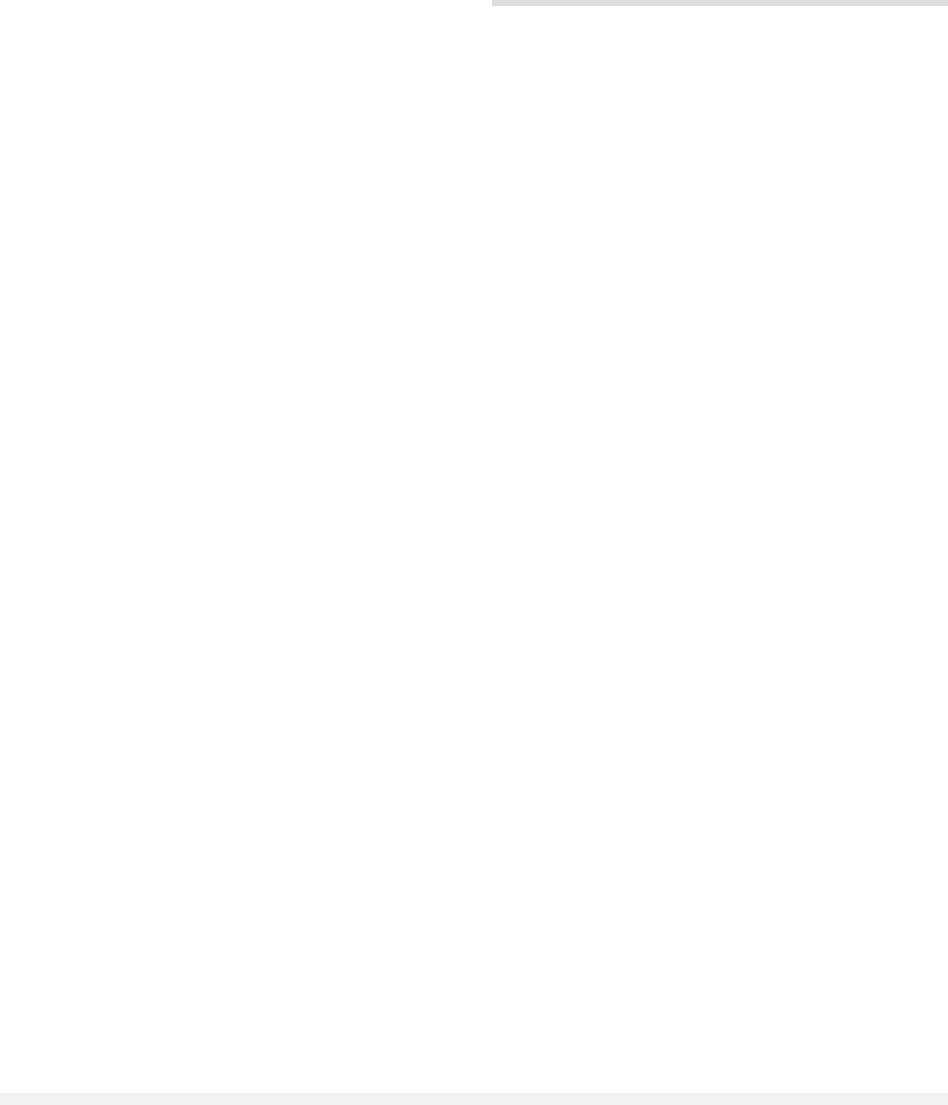
such as Herder and Ruckert. In Danilevsky’s con-
struction, not Germany but Russia occupies a lead-
ing position in the world as the standard-bearer of
socialism. At heart, his Slavophilism was not a re-
ligious conception but, in his view, a “scientific”
one.
Danilevsky gave his cyclic theory of history a
specifically Russian twist. In it he incorporated the
historiography of Oswald Spengler as found in the
latter’s Decline of the West. For Danilevsky, the West
and in particular Germany were in the throes of
decadence and demise. Russia, by contrast, was the
wave of the future. In his book, he insisted that
“even today [in the Balkans] the Slavs prefer the
heavy yoke of Islam to the civilized domination of
Austria.” Danilevsky came to the conclusion that
Russia’s interests ran parallel to those of Prussia,
which needed Russian collaboration more than the
other way around. Yet Russia alone, he insisted,
could make the best synthesis of all types of civi-
lization worldwide.
Danilevsky’s views influenced such writers as
Fyodor Dostoyevsky (1821–1881). Moreover, his
Slavophilism and pan-Russism became a point of
departure for rationalizing tsarist Russian foreign
policy. This expansionist motivation allowed Slavs
to become united as “brothers” around the Russian
core. Polish Slavs, on the other hand, would be ex-
cluded in this brotherhood because Poland was said
by some to be a collective “old traitor to Slavdom.”
Because of his socialist views and his affinity
to the revolutionist Petrashevsky Circle of social-
ists in St. Petersburg, Danilevsky ran afoul of the
tsarist police. As the reputed leading Russian expert
on Fourierism, he, too, was put on trial and im-
prisoned along with the other Petrashevtsy, in-
cluding Dostoyevsky.
Although Bolshevik and Soviet propaganda dis-
avowed Danilevskian Pan-Slavism as a tsarist
dogma, Leninism-Stalinism nevertheless reflected,
in essence, a good deal of this thought. Lenin had
described the Great Russian proletariat as the “van-
guard” of world revolution. Stalin, in turn, echoed
this idea in his tributes to the Great Russians, plac-
ing them above all other peoples in the Soviet vic-
tory over Nazi Germany in 1945. Moreover, in its
domestic imperial policy, Moscow described the
Russians as the elder brother of all nations and na-
tional groups composing the USSR.
See also: DOSTOYEVSKY, FYODOR MIKHAILOVICH; OB-
SHCHINA; PANSLAVISM; PETRASHEVTSY
BIBLIOGRAPHY
Kohn, Hans. (1953). Pan-Slavism: Its History and Ideol-
ogy. Notre Dame, IN: University of Notre Dame.
Venturi, Franco. (1960). Roots of Revolution: A History of
the Populist and Socialist Movements in Nineteenth-
Century Russia. London: Weidenfeld and Nicolson.
A
LBERT
L. W
EEKS
DARGINS
The Dargins (or Dargwa) are an ethnic group in
the Republic of Dagestan in the Russian Federation.
At the 1989 Soviet Census they numbered 280,431,
or 15.8 percent of the republic. In the USSR as a
whole there were 365,038 Dargins, of whom over
97 percent considered Dargin to be their native
tongue. Of that same number 68 percent claimed
fluency in Russian as a second language. This
would include a significant majority of the adults.
The Dargins are situated in the area of Kizlyar,
where one of the branches of the Dagestani State
University is found.
The Dargin language is a member of the Lak-
Dargwa group of the Northeast Caucasian family
of languages. In Soviet times it would also have
been included in the larger category of Ibero-Cau-
casian languages. This grouping owed as much to
the politics of druzhba narodov (the Soviet policy of
Friendship of the Peoples) as it did to the reality of
linguistic relation in this diverse collection of lan-
guages found in the Caucasus region. Following the
general pattern of many of the non-Slavic lan-
guages of the Soviet Union, Dargin has had a mod-
ified Cyrillic alphabet since 1937. A Latin alphabet
was utilized from 1926 to 1937 and before that
Dargin was written in an Arabic script.
A modest number of books was published in
Dargin during the Soviet period. From 1984 to 1985,
for example, a total of fifty-one titles appeared. This
compares favorably with other ethnic groups of its
size, but without an ethnic jurisdiction of its own.
A people such as the Abkhaz, with less than a third
of the population of the Dargins, had 149 titles pub-
lished in the same two-year period.
The Dargins have competed with other local
nationalities for position within the diverse Dages-
tan Republic as ethnic politics are manipulated
along with religious identity. The Dargins have tra-
ditionally been Sunni Muslims, with the strong in-
DARGINS
364
ENCYCLOPEDIA OF RUSSIAN HISTORY

fluence of Sufism characteristic in the Caucasus re-
gion.
See also: CAUCASUS; DAGESTAN; ISLAM; NATIONALITIES
POLICIES, SOVIET; NATIONALITIES POLICIES, TSARIST
BIBLIOGRAPHY
Karny, Yo’av. (2000). Highlanders: A Journey to the Cau-
casus in Quest of Memory. New York: Farrar, Straus
and Giroux.
P
AUL
C
REGO
DASHKOVA, YEKATERINA ROMANOVNA
(1743–1810), public figure, author, and memoirist.
As director of the St. Petersburg Academy of
Sciences and president of the Russian Academy,
Princess Yekaterina Romanovna Dashkova (née
Vorontsova) was one of the first women to hold
public office in Europe. By any standard, Dashkova
led a remarkable life: She was born in 1743 to a
prominent Russian noble family, the Vorontsovs.
After losing her mother at the age of two,
Dashkova grew up in the household of her uncle,
Count Mikhail Vorontsov, where she received the
best instruction available for young women. Yet,
as she points out in her Memoirs, Dashkova felt
compelled to supplement her education with in-
tensive reading of authors such as Voltaire, Mon-
tesquieu, and Helvétius, and demonstrated a lively
interest in politics from her earliest years. Her pas-
sion for learning, and for theories of education,
would prove constant throughout her life.
In 1759 Dashkova married Prince Mikhail
Ivanovich Dashkov and bore him three children in
quick succession: Anastasia (1760–1831), Mikhail
(1761–1762), and Pavel (1763–1807). Their mar-
riage was happy, but short-lived: Mikhail died af-
ter a brief illness in 1764, leaving Dashkova with
the task of paying his debts and rearing their two
surviving children. Significantly, Dashkova chose
never to remarry. Moreover, her relationship with
her children became the source of recurring sorrow
to Dashkova, who outlived her son and disinher-
ited her daughter.
By far the most significant figure in Dash-
kova’s life, however, was Empress Catherine II,
whom Dashkova met in 1758, while the former
was Grand Duchess and twice the age of the fif-
teen-year-old Dashkova. According to Dashkova,
the attraction between the two was immediate, if
only because—as she writes with some exaggera-
tion in her Memoirs—“there were no other two
women at the time . . . who did any serious read-
ing” (p. 36).
The defining moment in Dashkova’s life took
place in 1762, when the young princess took part
in the palace revolution that overthrew Peter III and
brought Catherine, his wife, to power. While his-
torians continue to debate the precise role that
Dashkova played in the coup, Dashkova places her-
self at the center of the revolt in her Memoirs.
Catherine initially rewarded Dashkova’s loyalty
with gifts of money and property. Within a short
time, however, the relationship between the two
women deteriorated—the result, perhaps, of
Dashkova’s exalted claims for her role in Cather-
ine’s ascension to the throne.
Following the death of her husband in 1764,
Dashkova spent much of the next two decades in
self-imposed exile from the Russian court. From
1769 to 1771, and again from 1775 to 1782,
Dashkova traveled abroad, overseeing her son’s ed-
ucation in Scotland and meeting with prominent
figures of the Enlightenment, such as Diderot,
Voltaire, Benjamin Franklin, and Adam Smith. Af-
ter Dashkova returned to Russia, in 1783 Cather-
ine appointed her director of the Academy of
Sciences, which the previous director had left in
considerable disarray. Not only did Dashkova re-
store the fortunes of the Academy—much as she
would affairs on her various estates—but she also
inspired Catherine to found the Russian Academy,
with the goal of compiling the first Russian ety-
mological dictionary and fostering Russian culture.
In her role as director of both academies, Dashkova
was instrumental in bringing Enlightenment ideas
to Russia. Dashkova also wrote and published ex-
tensively: She translated works on education,
travel, and agriculture; composed verse and several
plays; and oversaw the publication of several jour-
nals.
After quarrelling with the empress over the
publication of the Yakov Knyazhnin’s play Vadim
Novgorodsky, which Catherine claimed was an at-
tack on autocracy, Dashkova requested a leave of
absence from the Academy in 1794. Catherine’s
death in 1796 brought further misfortune to
Dashkova: In order to punish her for the role she
played in the downfall of his father, Emperor Paul
exiled Dashkova to a remote estate in northern
Russia. One year later, after Dashkova appealed
for clemency on the grounds of ill health, Paul
DASHKOVA, YEKATERINA ROMANOVNA
365
ENCYCLOPEDIA OF RUSSIAN HISTORY
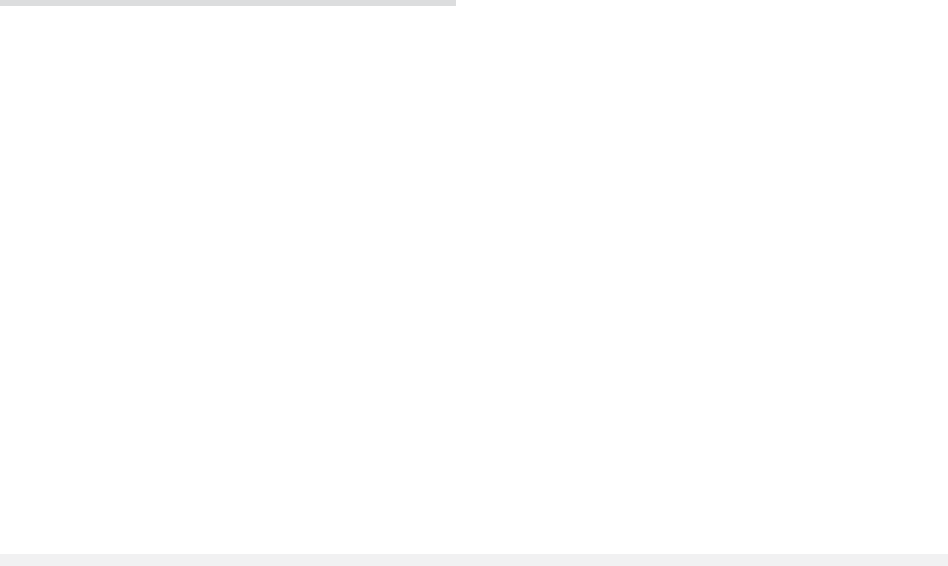
permitted her to return to Troitskoye, her estate
near Moscow. Paul’s death and the accession of
Alexander I to the throne in 1801 brought an end
to Dashkova’s exile, but she chose to spend her re-
maining years at Troitskoye, managing her hold-
ings and writing her celebrated memoirs.
As a historical figure, Dashkova remains sig-
nificant for her prominent role in the intellectual
life of eighteenth-century Russia: She exemplified
the Enlightenment ideal of the educated woman, or
femme savante, and inspired both admiration and
anxiety among her contemporaries for her unusual
achievements. Furthermore, her accomplishments
illuminate central themes in the social and cultural
history of Russia: female intrigue and patronage
during the era of empresses; the persistence of no-
ble family politics in the emerging bureaucratic
state; and the Russian reception of the Enlighten-
ment.
See also: ACADEMY OF SCIENCES; CATHERINE II; PETER III
BIBLIOGRAPHY
Dashkova, E. R. (1995). The Memoirs of Princess Dashkova:
Russia in the Time of Catherine the Great, tr. and ed.
Kyril Fitzlyon, with an introduction by Jehanne M.
Gheith. Durham, NC: Duke University Press.
M
ICHELLE
L
AMARCHE
M
ARRESE
DASHNAKTSUTIUN
The Hay heghapokhakan dashnaktsutiun (Armenian
Revolutionary Federation, ARF, Dashnak Party, or
Dashnaktsutiun) was founded in 1890 in Tbilisi,
by Russian Armenian intellectuals, in order to help
Armenians in the Ottoman Empire obtain economic
and political reforms. The party established branches
throughout the Ottoman and Russian Empires as
well as in Europe and the United States. At differ-
ent times the party supported guerrilla activities,
political action, and Western intervention as means
to achieve its goals in the Ottoman Empire.
In the Russian Empire the Dashnaktsutiun led
the opposition to the anti-Armenian policies of the
tsarist government (1903–1905) and, subsequently,
the militia forces that clashed with Azerbaijani
Turks in the Caucasus during the revolution of
1905–1907. In 1914 it supported a Russian plan
for reforms in Ottoman Armenia. During World
War I it also organized Russian-supported Armen-
ian volunteer units in Eastern Armenia to help Ar-
menians in the Ottoman Empire.
The genocide committed by the Young Turk
government against the Armenian population
ended the presence of the party in Turkey. With
the disintegration of the Russian Empire, the Dash-
naktsutiun led the first independent Armenia,
1918–1920, only to cede power to the Bolsheviks
in 1920. The party, along with other noncommu-
nist groups, was banned from Soviet Armenia.
In the diaspora the Dashnaktsutiun focused on
community-building, representing Armenians in
host countries, and pursuing national aspirations
internationally. Until the 1960s that meant a free
and independent Armenia. Beginning in the 1970s,
the party shifted its focus from an anticommunist
and anti-Soviet crusade to an anti-Turkish cam-
paign for the recognition of the genocide and ter-
ritorial reparations from Turkey, for which Russian
and USSR support was considered essential.
The Dashnaktsutiun has claimed a special po-
sition in Armenian history through its maximalist
demands for the reconstitution of historic Arme-
nia. Having reestablished itself in Armenia in 1990,
the party reserved the right to resist by force any
government it considered unacceptable; it opposed
the leadership of the national movement that rose
in Armenia in 1988 and accepted with reluctance
the country’s declaration of independence in 1991.
Vehemently opposed to the first president, Levon
Ter-Petrossian, it has been more supportive of the
second, Robert Kocharian. Nonetheless, despite sub-
stantial contributions from its diasporan segment,
the Dashnaktsutiun has been unable to make sig-
nificant gains in Armenia’s elections.
The Dashnaktsutiun is a tightly knit, discipli-
narian organization with grass roots mechanisms
in many communities. It is financed mainly by
membership dues and donations by sympathizers.
See also: ARMENIA AND ARMENIANS; CAUCASUS; NA-
TIONALISM IN TSARIST EMPIRE; NATIONALITIES POLI-
CIES, SOVIET; NATIONALITIES POLICIES, TSARIST;
TURKEY, RELATIONS WITH
BIBLIOGRAPHY
Libaridian, Gerard J. (1996). “Revolution and Liberation
in the 1892 and 1907 Programs of the Dashnakt-
sutiun.” In Transcaucasia, Nationalism and Social
Change, rev. ed., ed. Ronald G. Suny. Ann Arbor:
University of Michigan Press.
DASHNAKTSUTIUN
366
ENCYCLOPEDIA OF RUSSIAN HISTORY
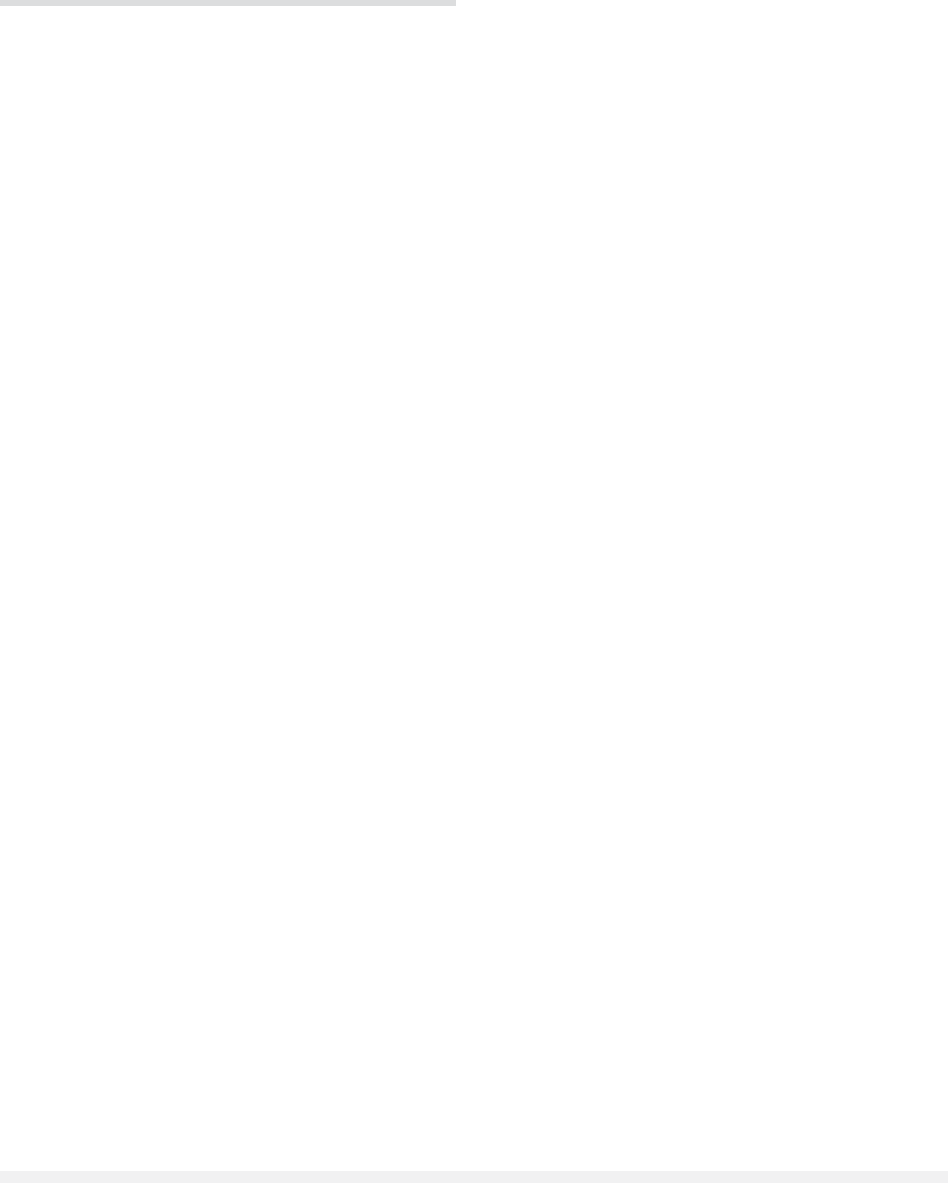
Ter Minassian, Anaide. (1984). Nationalism and Social-
ism in the Armenian Revolutionary Movement. Cam-
bridge, MA: Zoryan Institute.
G
ERARD
J. L
IBARIDIAN
DECEMBRIST MOVEMENT
AND REBELLION
Secret society, active from 1816 to 1825 in Russia,
named after its unsuccessful revolt in Saint Peters-
burg on December 14, 1825.
The Decembrist movement began as a secret so-
ciety named the Union of Salvation, active from
1816 to 1818 in St. Petersburg. The Union of Wel-
fare, created in 1818, followed. The latter existed
until 1821, united more than two hundred mem-
bers, and had branches in St. Petersburg, Moscow,
Kishinev, and other cities of the Russian empire.
Both societies were organized by young officers
who had recently returned from a foreign military
campaign during the Napoleonic wars. Convinced
that the Russian army had granted freedom to
European people, these liberally minded and
well-educated young members of the Russian no-
bility were disappointed by the politics of Alexan-
der I, whose reforming plans outlined at the
beginning of his reign were not realized. Observing
the steep growth of nationalism in Europe, and fol-
lowing the tradition of “love for the fatherland” of
the Russian educated nobility in the late eighteenth
and early nineteenth centuries, the Decembrists
were inclined toward extreme patriotism. They
imagined the Russian people as a nation and acted
in its name. Taking as an example the German Tu-
gendbund (Union of Virtue), active in Prussia
throughout Napoleon’s occupation, members of se-
cret societies claimed the national revival as their
main aim. In particular, this nationalistic tendency
expressed itself in demands for the discharge of for-
eigners from Russian positions of authority.
Freemasonry, with its idealism and moral impera-
tive on the one hand and secrecy and ritualization
on the other, also contributed to the movement.
Many participants of Russian secret societies were
simultaneously members of Masonic lodges.
The main goal of the Union of Welfare was
to influence public opinion. Its members aspired
to create favorable conditions for constitutional
reforms in Russia aimed at the moral and spiri-
tual improvement of the elite and society as a
whole. Many members were engaged in the es-
tablishment of Lancaster’s school system in Rus-
sia, as they believed it promoted enlightenment
among the poor classes and in the army. Litera-
ture, playing an important role in Russian public
life since the reign of Catherine the Great, was also
an important field of activity for the Union of
Welfare and other Decembrist societies. Many De-
cembrists contributed to Russian political lyrics
and literary romanticism and were members of
various literary societies. The conspirators Kon-
draty Ryleyev, Alexander Bestuzhev-Marlinsky,
and Wilhelm Kuchelbecker were famous writers
of their time.
New secret societies created on the basis of the
Union of Welfare were more conspiratorial and bet-
ter organized. The Southern Society, with its ab-
solute leader, colonel Pavel Pestel, appeared in 1820
in Tulchin; and the Northern Society was founded
in 1821 in St. Petersburg. Nikita Muraviev and
Nikolai Turgenev were the main figures of the lat-
ter society. In the summer of 1825 the Southern
Society took members of the Society of United
Slavs, hoping to create a Pan-Slavic confederation.
The conspirators discussed projects of the Russian
constitution and ways of performing an armed re-
volt and regicide.
Pestel’s Russian Justice, accepted as a program
of the Southern Society, and Muraviev’s “Consti-
tution” were the most representative of the De-
cembrists’ constitutional projects. Both projects
provided for the abolition of serfdom. Muraviev of-
fered constitutional monarchy, a federal organiza-
tion of the country, and property qualification at
elections. Pestel’s radical project provided for cre-
ation of a centralized Jacobin-like republic and spe-
cific land reform, dividing land into private and
public sectors. According to Pestel’s project, dicta-
torship of a provisional government was to last ten
to fifteen years after the revolt, whereas the lead-
ers of the Northern Society suggested early election
of authority.
Immediate cause for the conspirators to act was
the succession crisis. On November 19th, 1825,
childless Alexander I died unexpectedly in the south
of Russia in Taganrog, far from the capital. Ac-
cording to the law of 1797, the oldest of his broth-
ers, Grand Duke Konstantin, Viceroy of Poland,
was to become the successor. However, in 1820
Konstantin had entered a morganatic marriage, and
in 1822, in a private letter to Alexander, he had
abandoned his right to the Russian throne. In 1823
DECEMBRIST MOVEMENT AND REBELLION
367
ENCYCLOPEDIA OF RUSSIAN HISTORY
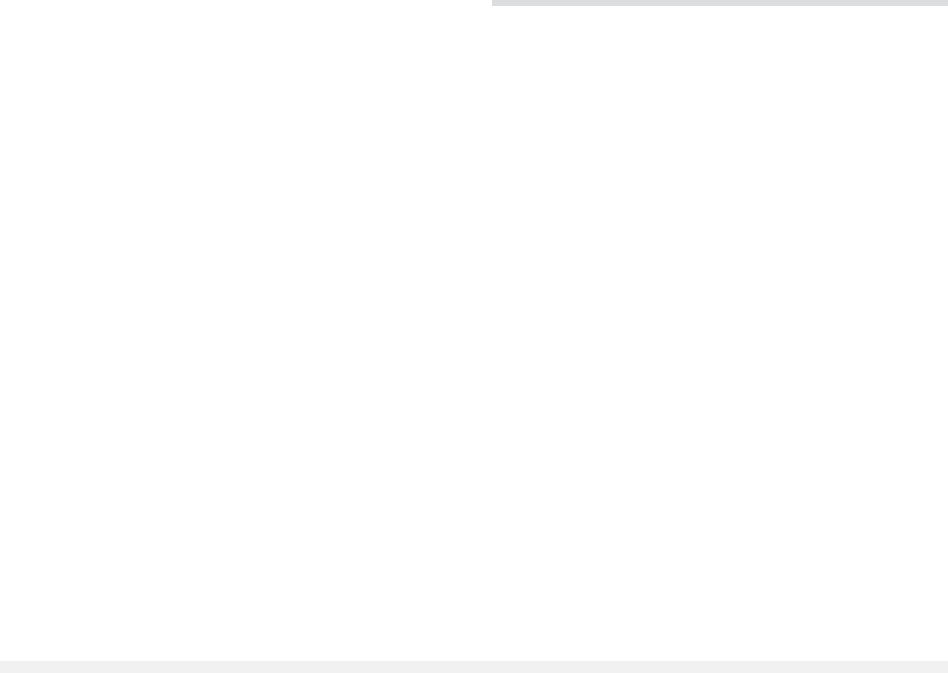
Alexander signed a manifesto wherein he proclaimed
his next eldest brother Nicholas the successor. It
is unknown why this document was kept secret
from the public. When news of the death of
Alexander reached the capital, the general governor
of St. Petersburg, Mikhail Miloradovich, convinced
Nicholas that the guards were not loyal to him and
would consider his accession to the throne a usurpa-
tion. Nicholas and the army swore allegiance to
Konstantin, who was residing in Poland. The lat-
ter was not willing to accept authority, and yet he
did not renounce it publicly. In the dangerous sit-
uation of interregnum, Nicholas became emperor
and set the new oath of allegiance for December 14.
Taking advantage of disorder in the troops and
government, members of secret societies decided to
persuade soldiers not to swear an oath to Nicholas.
The plan of revolt was developed in Ryleyev’s
apartment on the night of December 13. The con-
spirators composed a manifesto to the Russian
people, in which “the abolition of the former gov-
ernment” was proclaimed. Colonel Prince Sergei
Trubetskoy, one of the leaders of the Northern So-
ciety, was appointed as the leader of the revolt.
Unfortunately for the conspirators, not all
those officers and troops expected to participate in
the revolt actually gathered. Trubetskoy seemed to
lose nerve and did not lead the mutineers. About
three thousand soldiers were lined up in combat
readiness on the Senate Square with thirty officers
as their leaders. The nearest streets were crowded
with people. The troops loyal to Nicholas sur-
rounded the square. For several hours the troops
stood opposite each other. A few attempts to per-
suade the soldiers to return to their barracks were
made, and General Governor Miloradovich was fa-
tally wounded by retired lieutenant Pavel Kakhovsky.
At last Nicholas gave an order to open fire, and the
revolt was suppressed.
Despite the defeat in the capital, and despite Pes-
tel’s arrest on December 13, the southern conspir-
ators, including the members of the United Slavs,
decided to act. Sergei Muraviev-Apostol and Mikhail
Bestuzhev-Ryumin supervised the revolt. On De-
cember 29 the conspirators managed to persuade
soldiers of the Chernigov regiment to start out for
the capital. On January 3, 1826, the government
troops stopped the mutineers and defeated them.
A special investigation committee was created
to determine the circumstances of the conspiracy.
The High Criminal Court condemned to death five
Decembrists: Pestel, Ryleyev, Muraviev-Apostol,
Kakhovsky, and Bestuzhev-Ryumin. They were
hanged in St. Petersburg on July 13, 1826. Thirty-
one officers were sentenced to lifelong hard labor.
The other officers and soldiers were sentenced to
different terms of hard labor, disciplinary battal-
ions, and exile. By the amnesty declared in 1856
after Alexander II’s accession, Decembrists were al-
lowed to reside in the central part of Russia and re-
gained their nobility privileges.
See also: FREEMASONRY; PANSLAVISM; SLAVOPHILES
BIBLIOGRAPHY
Mazour, Anatol. (1967). The First Russian Revolution,
1825: The Decembrist Movement, Its Origins, Develop-
ment, and Significance. Stanford, CA: Stanford Uni-
versity Press.
Raeff, Marc, ed. (1966). The Decembrist Movement. Engle-
wood Cliffs, NY: Prentice-Hall.
Riasanovsky, Nicholas. (1976). A Parting of the Ways:
Government and the Educated Public in Russia,
1801–1855. Oxford: Clarendon Press.
Saunders, David. (1992). Russia in the Age of Reaction and
Reform, 1801–1881. London: Longman.
E
LENA
Z
EMSKOVA
DECREE ON LAND
Upon seizing power from the Provisional Govern-
ment in October 1917, the Bolsheviks immediately
issued two decrees. The first decree served to with-
draw Russia from World War I. The second decree
issued by the new Bolshevik regime was entitled
“On Land.” The decree abolished property rights of
landlords and provided for the confiscation of es-
tates with no compensation. More generally, the
Decree on Land abolished private ownership of land
and introduced the nationalization of land. Under
the terms of the decree, about 150 million hectares
of arable land, pasture land, and forest land were
confiscated and distributed to 25 million commu-
nal households. The October 1917 land decree was
followed by legislation in January 1918 that for-
bade the selling, renting, or mortgaging of land.
Nationalized land became the possession of “all the
people” and could be used only by those who cul-
tivated it. Although all land was nationalized, in-
dividuals or families could obtain allotments of land
for small-scale agricultural activities, assuming
that they themselves used the land and did not em-
ploy hired labor. These land plots included collec-
DECREE ON LAND
368
ENCYCLOPEDIA OF RUSSIAN HISTORY
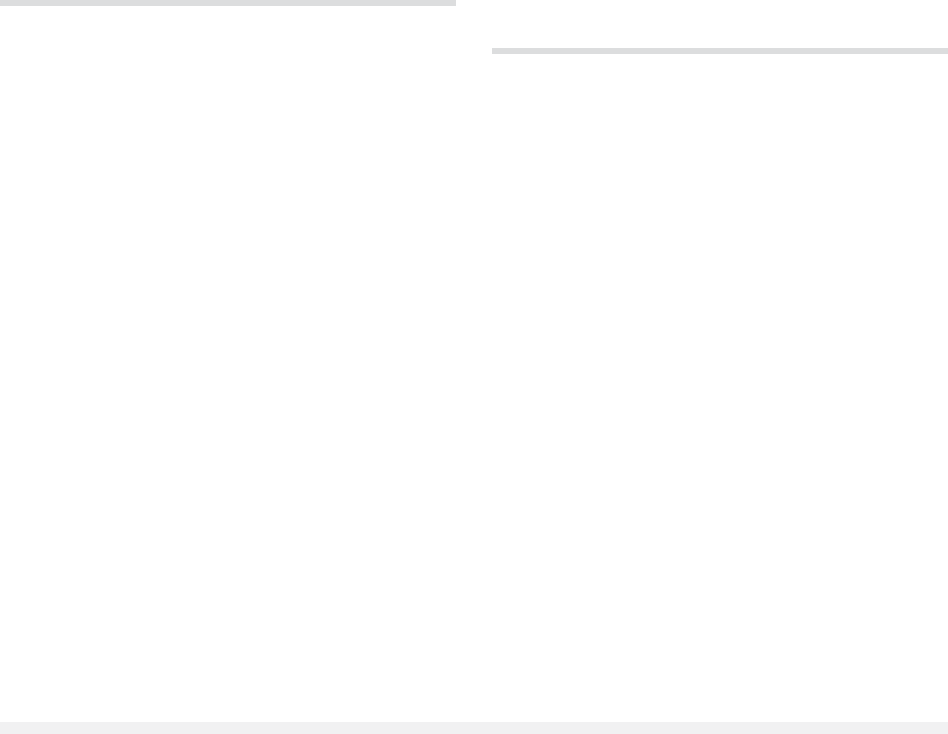
tive garden plots, private plots, and dacha plots, the
size of which was restricted by local norms.
The prohibition on leasing land remained until
March 1990, when a USSR law on land came into
effect. Legal restrictions on private ownership of
land remained in effect until December 1990 when
a law was passed in the RSFSR that permitted the
ownership of land, subject to certain constraints.
See also: BOLSHEVISM; OCTOBER REVOLUTION
BIBLIOGRAPHY
Danilov, Viktor. P. (1988). Rural Russia Under the New
Regime. Bloomington: Indiana University Press.
Keep, John L. H. (1976). The Russian Revolution: A Study
in Mass Mobilization. New York: Norton.
Medvedev, Zhores A. (1987). Soviet Agriculture. New
York: Norton.
Volin, Lazar. (1970). A Century of Russian Agriculture:
From Alexander II to Khrushchev. Cambridge, MA:
Harvard University Press.
S
TEPHEN
K. W
EGREN
DEDOVSHCHINA
A term used for “hazing” in the Russian military
from the Russian word for grandfather.
This set of practices, a long-standing feature of
Soviet army life, appears to have accelerated dra-
matically in the 1990s. Observers note that “haz-
ing” is itself a problematic translation, because it
fails to grasp the severity of the systematic vio-
lence, humiliation, and torture visited upon new
conscripts by their elders. Official estimates place
the number of conscripts murdered at the hands of
their comrades-in-arms at perhaps a thousand per
year. Independent organizations, including the
well-known advocacy group for military con-
scripts, Soldiers’ Mothers, estimates that as many
as three to four thousand conscripts are murdered
each year by other soldiers and believes that a large
number die as a result of the collective practices
known as dedovshchina. The problem has also con-
tributed significantly to the very high rate of sui-
cide evident in the Russian armed forces. Anatol
Lieven argues that nothing has done more to de-
stroy morale and cohesion than the problem of de-
dovshchina. The lack of an effective system of
non-commissioned officers, capable of providing
the disciplinary structure and rule-enforcement
necessary to head off such hazing, contributes sig-
nificantly to the widespread nature of these abuses.
The general lack of resources available to the Russ-
ian military in the 1990s, including the basic means
of life, such as food, have also contributed to ero-
sion of military morale, which many observers say
has contributed to the high level of atrocities com-
mitted by Russian forces in the two campaigns in
Chechnya, from 1994 to 1996, and from 1999 to
the present. Lieven sees dedovshchina as a symbio-
sis between tyranny and anarchy in which rules
and restraints are crippled “leaving only a veneer
of autocratic but in fact powerless authority over
a pit of chaos, corruption, and a host of private
tyrannies.”
See also: NATIONALITIES POLICIES, SOVIET
BIBLIOGRAPHY
Lieven, Anatol. (1999). Chechnya: Tombstone of Russian
Power. New Haven, CT: Yale University Press.
Weiler, Jonathan. (1999). “Human Rights in Post-Soviet
Russia: Progress or Regression?” Ph.D. diss., Uni-
versity of North Carolina, Chapel Hill.
J
ONATHAN
W
EILER
DEFECTORS, SOVIET ERA
Defectors (perebezhchiki) during the Soviet era were
people who left the Soviet Union without permis-
sion and in violation of Soviet law. Soviet author-
ities applied the term defection more broadly than
in the West, where a defector is usually defined as
an individual who has committed treason by co-
operating with a hostile foreign intelligence service.
Because Soviet citizens were prohibited by law from
leaving the country to settle elsewhere, anyone
who sought political asylum in another country
was labeled a defector and a traitor. This included
scientists, artists, film directors, dancers, writers,
musicians, scholars, journalists, and seamen. (The
term did not apply to writer Alexander Solzhenit-
syn or cellist Mstislav Rostropovich, who were
forcibly exiled; the dissident Vladimir Bukovsky,
who was brought to the West as part of an ex-
change; or former KGB general Oleg Kalygin, now
residing in the United States, who criticized the KGB
publicly but remained a Soviet citizen.)
Among well-known Soviet defectors who fall
into the broader category were Stalin’s daugh-
ter, Svetlana Alliluyeva; ballet dancers Rudolph
DEFECTORS, SOVIET ERA
369
ENCYCLOPEDIA OF RUSSIAN HISTORY
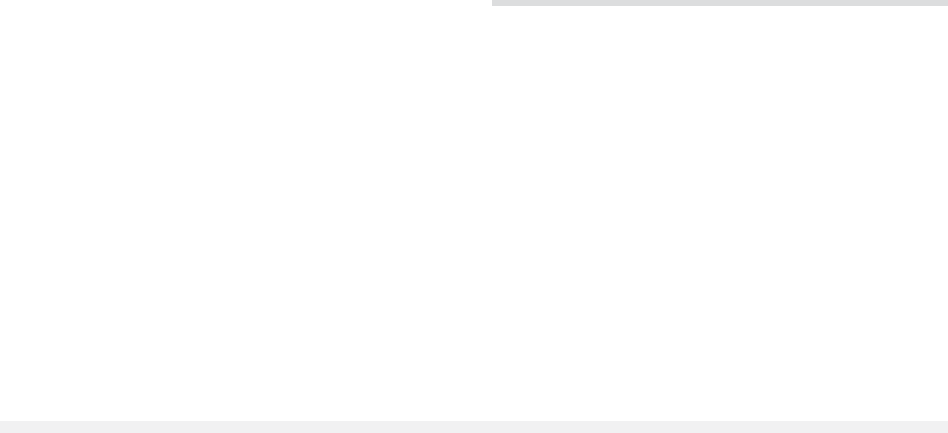
Nureyev, Natalia Makarova, Mikhail Baryshnikov,
and Alexander Godunov; pianist Dmitry Shostako-
vich; theater director Yuri Lyubimov; and chess
grandmaster Viktor Korchnoy.
In addition many Soviet defectors betrayed
their country by passing on secrets to Western in-
telligence. Often they wrote books about their ex-
periences. Among the earliest such defectors was
NKVD (People’s Commissariat of Internal Affairs)
officer Walter Krivitsky, who sought asylum in the
United States in 1937, wrote the book I was Stalin’s
Agent, and died under mysterious circumstances in
1941. Another NKVD officer, Viktor Kravchenko,
the author of I Chose Freedom, defected to the United
States in 1944 and died in 1966. Igor Gouzenko, a
cipher clerk for Soviet military intelligence (GRU),
turned himself over to Canadian authorities in Ot-
tawa, Canada, in 1945. Gouzenko’s revelations
about the Soviet spy network in the West, sup-
ported by documents he brought with him, helped
to spark the Cold War. Intelligence officer Peter
Deryabin sought American asylum in Vienna in
1953, later writing several books about his career
in the Soviet secret services. In 1954 KGB agents
Vladimir and Yevdokia Petrov defected in Australia
and later settled in the United States, where they
published Empire of Fear in 1956. KGB officer Ana-
toly Golitsyn defected to the United States in 1961,
reporting that the KGB had placed an agent at the
highest levels of American intelligence, but unable
to give details to identify the agent. Oleg Lyalin, a
KGB officer posing as a trade official, defected to
Britain in 1971. Alexei Myagkov, a KGB captain
serving in Germany, defected to West Berlin in
1974, later writing Inside the KGB: An Expose by an
Officer of the Third Directorate. Arkady Shevchenko,
a high-ranking Soviet diplomat serving at the
United Nations, defected in New York in 1978. In
1985 he published a best-selling book entitled
Breaking with Moscow. Stanislav Levchenko, a KGB
officer posing as a journalist, defected in Japan in
1979 and now resides in the United States. Ilya
Dzhirkvelov, a KGB officer now living in Britain,
defected while working under cover for the Soviet
news agency TASS in Switzerland in 1980. He later
wrote Secret Servant: My Life with the KGB and the
Soviet Elite. Among other KGB officers who defected
to Britain in more recent years were Vladimir
Kuzichkin, a KGB officer who was working in Iran
before he sought asylum in 1982; and Oleg
Gordievsky, a high-ranking KGB colonel who had
collaborated secretly with British intelligence since
1974 and escaped to the West in 1985.
For Western intelligence services, one challenge
was to establish that the Soviet defectors were gen-
uine and were not acting as double agents for the
KGB. When Yury Nosenko, a middle-level KGB of-
ficer, offered himself to the CIA in Geneva in 1962,
a debate ensued over his bona fides that lasted for
ten years and seriously impaired CIA operations
against the Soviet Union. Another controversial
case was that of Alexander Orlov, an agent of the
Soviet NKVD, who defected to Spain in 1938 and
ended up in the United States. Orlov, whose book
The Secret History of Stalin’s Crimes created a sensa-
tion when it appeared in 1953, passed on infor-
mation to the CIA and the FBI, but some historians
have claimed that he remained loyal to the Soviets.
When high-ranking KGB officer Vitaly Yurchenko
defected to the United States in 1985, it was an
enormous blow to the KGB, because he passed on
details of KGB secret agents and operations to the
CIA. But when Yurchenko apparently became un-
happy with his treatment by the CIA and, after a
few months, slipped away and re-defected to the
Soviet Union, the case was highly embarrassing to
American authorities.
See also: COLD WAR; IMMIGRATION AND EMIGRATION;
STATE SECURITY, ORGANS OF
BIBLIOGRAPHY
Andrew, Christopher, and Gordievsky, Oleg. (1990).
KGB. The Inside Story of Its Foreign Operations from
Lenin to Gorbachev. London: Hodder and Stroughton.
Krasnov, Vladislav. (1985). Soviet Defectors: The KGB
Wanted List. Stanford, CA: Hoover Institution Press.
A
MY
K
NIGHT
DEMOCRATIC PARTY
The Democratic Party of Russia (DPR) since its
founding in 1990 has changed its face radically at
least three times. It was created by politicians, in-
cluding radical anticommunists as well as “com-
munists with a human face,” as a counterbalance
to the Communist Party of the Soviet Union
(CPSU). The first split happened as early as the con-
stituent assembly, and a number of well-known
politicians left the party, unhappy with the selec-
tion of Nikolai Travkin, leader of the CPSU Demo-
cratic platform, as sole chair. In the 1993 elections,
the DPR, whose list was headed by Travkin, film
director Stanislav Govorukhin, and academician-
DEMOCRATIC PARTY
370
ENCYCLOPEDIA OF RUSSIAN HISTORY

economist Oleg Bogomolov, received 3.0 million
votes (5.5%, eighth place) and fourteen seats in the
Duma. The second split happened in 1994, when
Travkin entered the government; the majority of
the fraction, charging him with compromise,
elected a new leader, economist Sergei Glaziev, who
had left Boris Yeltsin’s administration in 1993. The
DPR changed from “Travkin’s party” into “the
party of Glaziev-Govorukhin.” The DPR did not
participate independently in the 1995 elections. Its
leaders joined three ballots: Glaziev was third on
the KRO list, Govorukhin headed the Stanislav Gov-
orukhin Bloc, and Bogomolov was third on the “So-
cial-Democrat” list. None of the three lists crossed
the five-percent barrier. In 1996, with the depar-
ture first of Glaziev from the DPR (via the Congress
of Russian Communities to the Communist Party
of the Russian Federation, or KPRF), then Gov-
orukhin (via the KPRF to Fatherland—All Russia, or
OVR), the DPR came to be led by little-known func-
tionaries. In the 1999 elections, the party first be-
came a co-constituent of the bloc “Voice of Russia,”
then moved into the bloc “All Russia,” and van-
ished completely with the formation of OVR.
When, in the fall of 2001, an attempt was made
to restore the former popularity of the old brand,
and the Novgorod governor Mikhail Prusak was
elected leader of the DPR, many viewed this as an
endeavor on the part of the Kremlin to create a tame
right-centrist party to replace the Union of Right
Forces (SPS), which was not sufficiently compliant.
Prusak announced at the time that the “The DPR
will most likely become a party of the center, with
a clear structure in observance of the principle of
single management. This will be a national party,
whose tasks will include the construction of a
democratic civil society, fortification of the gov-
ernment, preservation of its territorial integrity,
formation of a middle class, and development of
national product.” In 2002, having created forty-
nine regional branches with a total of more than
10 million members, the DPR was able to register
again as a political party with the Ministry of Jus-
tice.
Prusak was not sufficiently dedicated to party
matters, and at the 2003 congress the DPR deposed
its leader. It was announced that the party would
enter federal elections for the first time in ten years
but that the position of leader would probably be
vacant.
See also: POLITICAL PARTY SYSTEM; UNION OF RIGHT
FORCES
BIBLIOGRAPHY
McFaul, Michael. (2001). Russia’s Unfinished Revolution:
Political Change from Gorbachev to Putin. Ithaca, NY:
Cornell University Press.
McFaul, Michael, and Markov, Sergei. (1993). The Trou-
bled Birth of Russian Democracy: Parties, Personalities,
and Programs. Stanford, CA: Hoover Institution
Press.
Reddaway, Peter, and Glinski, Dmitri. (2001). The Tragedy
of Russia’s Reforms: Market Bolshevism against Democ-
racry. Washington, DC: U.S. Institute of Peace Press.
N
IKOLAI
P
ETROV
DEMOCRATIC RUSSIA
The movement Democratic Russia (DR) is a relic of
the end of the Soviet epoch, when opposition arose
to the Communist Party of the Soviet Union (CPSU),
the only party at the time. Founded in October
1990, it initially united practically all the anticom-
munist opposition. Its predecessor was the bloc of
candidates “Democratic Russia” in the March 1990
elections for people’s deputies to the RSFSR and lo-
cal soviets. Numbering up to 205 delegates in con-
gresses from 1990 to 1993, the group “Democratic
Russia,” after the introduction of a prohibition
against membership in more than one fraction, split
into several fractions, two of which—“Democratic
Russia” and “Radical Democrats”—composed the
DR movement. In the 1991 presidential elections,
DR and the parties belonging to it, including the
DPR (Democratic Party of Russia), SDPR (Social-
Democratic Party of Russia), Peasant Party of Rus-
sia, Russian Christian Democratic Movement, and
the Republican Party of the Russian Federation,
supported Boris Yeltsin, who won for his first term.
After the “victory over the communists,” two
tendencies struggled within the movement: One fa-
vored turning it into a broad coalition of parties
and organizations, the other favored making a sin-
gle organization of it, allowing collective and indi-
vidual membership. As a result, parties broke off
from DR: first the Democratic Party of Russia, the
Constitutional-Democratic Party—Party of Peo-
ple’s Freedom, and the Russian Christian-Demo-
cratic Movement (1991), then, in 1992 and 1993,
the Social-Democratic Party of the RF, the Repub-
lican Party of the RF, the People’s Party of Russia,
and the Free Democratic Party of Russia. In the
1993 elections, DR was one of four co-constituents
of the bloc “Russia’s Choice,” but by the end of
DEMOCRATIC RUSSIA
371
ENCYCLOPEDIA OF RUSSIAN HISTORY

1994, most of the members of the movement, en-
tering the Duma on the lists “Russia’s Choice” and
“Yabloko,” dissociated themselves from the move-
ment, and its co-chairs, delegates Lev Ponomarev
and Gleb Yakunin, left the fraction Russia’s Choice.
At the outset of the 1995 campaign, the DR lead-
ers created a federal party, DemRussia, and, along-
side the Movement, established a bloc Democratic
Russia and Free Trade Unions, which ultimately
bowed out of participation in the elections, to the
advantage of Russia’s Democratic Choice (DVR) and
Yabloko. In 1996 the co-chair of DemRussia, Galina
Starovoytova, tried to establish candidacy for the
presidential elections; in 1998 she was murdered in
St. Petersburg in hazy circumstances.
In 1999 the Movement became one of a num-
ber of constituents of the bloc “A Just Cause,” and
in May 2001 it dissolved along with other demo-
cratic parties, becoming part of the Union of Right
Forces (SPS). Up to the moment of its dissolution,
according to the party’s president, Sergei Stanke-
vich, the party had about six thousand members,
including two thousand activists. Never having
been a leadership-oriented, monolithic, disciplined
structure, DemRussia retains its character in its
afterlife. Not all regional branches of the move-
ment and party agreed with the idea of dissolu-
tion; from time to time the name DemRussia is
mentioned in connection with various pickets and
meetings (against the war in Chechnya, concern-
ing anniversaries of the founding of the move-
ment, protection of the White House, and so
forth), as well as in connection with routine uni-
fication initiatives of the democrats.
See also: CONSTITUTIONAL DEMOCRATIC PARTY; DEMOC-
RATIC PARTY; POLITICAL PARTY SYSTEM; UNION OF
RIGHT FORCES; YABLOKO
BIBLIOGRAPHY
McFaul, Michael. (2001). Russia’s Unfinished Revolution:
Political Change from Gorbachev to Putin. Ithaca, NY:
Cornell University Press.
McFaul, Michael, and Markov, Sergei. (1993). The Trou-
bled Birth of Russian Democracy: Parties, Personalities,
and Programs. Stanford, CA: Hoover Institution
Press.
Reddaway, Peter, and Glinski, Dmitri. (2001). The Tragedy
of Russia’s Reforms: Market Bolshevism against Democ-
racry. Washington, DC: U.S. Institute of Peace Press.
N
IKOLAI
P
ETROV
DEMOCRATIC UNION
The Democratic Union (DS) is a radical liberal
party, the first political organization to emerge as
an alternative to the Communist Party of the So-
viet Union (CPSU), formed out of the dissident
movement shortly after the beginning of pere-
stroika. It was established in May 1988 on the ba-
sis of the seminar “Democracy and Humanism,”
which began in the summer of 1987. The Democ-
ratic Union’s nonconformism distinguishes it from
democratic parties that appeared later. Political ten-
dencies that initially coexisted in the DS alongside
the liberal—such as social democratic or Eurocom-
munist tendencies—gradually broke off. Under the
strain of numerous ideological and personal dis-
agreements, the DS went through numerous splits.
Where internal conflict arose between radical and
more moderate elements, the radical always gained
the upper hand.
The Democratic Union’s political activity con-
sisted mainly of conducting unsanctioned meet-
ings and making sensational announcements. In
the words of DS leader Valeria Novgorodskaya
(chair of the central coordinating council from
1996), DS activists were “genuine Bolsheviks, al-
beit with an anticommunist leaning.” In Decem-
ber 1992, on the initiative of Novgorodskaya and
N. Zlotkin, the party “Democratic Union of Rus-
sia” (DSR) was established, declaring itself a con-
stituent of the DS. In the spring of 1993, the DSR
supported Boris Yeltsin in the conflict with the
Congress of People’s Deputies, regarding him as a
“fighter against Soviet power,” and broke sharply
with the DS, which continued to view the presi-
dent and government as heirs of the Communist
regime. Novgorodskaya’s group was excluded
from the Moscow DS organization, and from that
point on, the DS and DSR existed separately. After
troops were brought into Chechnya in 1994, the
DSR moved into extreme opposition to the gov-
ernment, idealizing the Chechen side in the mean-
time. In 1996, the DSR first called for a repeal
of the presidential elections, in order to avoid a sit-
uation in which “the formal observation of demo-
cratic procedures leads to the liquidation of
democracy,” then it supported the candidacy of
Grigory Yavlinsky after Yeltsin’s second term.
During the Yugoslav crisis, the DS unequivocally
sided with the U.S. and NATO and announced that
it would send a detachment of volunteers to the
Balkans as aid to NATO, headed by Novgorod-
skaya.
DEMOCRATIC UNION
372
ENCYCLOPEDIA OF RUSSIAN HISTORY
